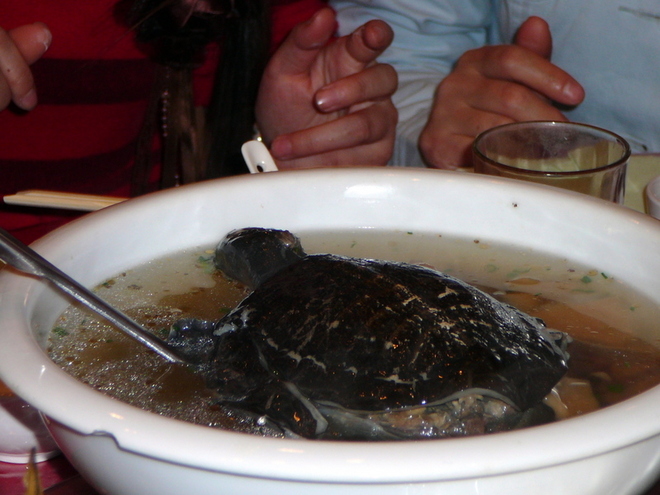Americans have always invested an enormous amount of time and worry into what they eat. Every week there seems to be another menu item that is controversial and detested as unhealthy. Among the thousands of foods enjoyed by people from all over the world, here are a few that are considered to be the most controversial… fakes!
Fake Honey
Stroll through any supermarket in the US, and you’ll find a full display of shiny containers full of golden honey; however, according to Food Safety News, nearly 1/3 of that honey is likely to have been smuggled in from China – and laced with illegal and unsafe antibiotics. Knowing that the honey you buy is safe to eat is crucial for you and your family’s health.
Here are a few tips that I found for helping to sniff out the fakes:
- Check the label. Read the ingredients listed and check for additives. Any company selling honey is required to list any additives added – make sure you know exactly what’s listed on the label before you buy.
- Taste the honey. If it seems off, yet the label claims it’s pure, try the dissolving test to check for purity: Get a glass of water and one tablespoon of honey. Empty the honey into the water. If the honey is impure, it will dissolve in the water. If it is pure, the honey will stick together and sink as a solid clump to the bottom of the glass.
Fish Fakers
Mislabeled fish is also becoming a widespread problem. According to the US Food & Drug Administration, nearly 33% of fish purchased across the nation is not what it claims to be. Seafood fraud is not only hurting consumers pocket book, but also hurts honest vendors and fisherman throughout the supply chain.
- The biggest fake fish species being sold include cheaper fish like pollock and whiting – although they are being marked and sold as cod.
- Catfish has been found to be sold as grouper, while cod and tilapia are being sold as red snapper and salmon.
- Really impacting the consumer’s pocketbook is when cheaper, farm-raised fish is being substituted as wild caught fish.
The Taste Of Controversy
Environmentalists and animal rights activities alike are speaking up about these controversial foods.
Blue Fin Tuna is quickly being fished to extinction and has become a highly controversial food. Blue fin is highly prized by sushi chefs around the world. However, research has shown that Blue Fin has become extinct in the Black Sea and continues to be fished in a sustainable way in other parts of the world.
Turtle is considered a delicacy in Asia and Eastern US. Most commonly found in soup, the controversy around this food is that many of the species being harvested for human food are endangered. Aside from endangerment, turtle is usually seen as part of the ‘pet’ category rather than a food category.
Horse-meat is popular in Asia, Europe and South America, and over the past 5-10 years, horse-meat has quickly become more of an acceptable consumable meat worldwide. The controversy surrounding horse-meat is that many people see horses as pets or companions, rather than food. Farms producing horses specifically for the purpose of consumption are becoming more popular and are often compared to farms that raise cows and chickens.
Dolphin activists claim that the practices in catching dolphins are inhumane. Dolphins are caught, hooked, and gutted while still alive. Dolphin meat also contains more mercury than most fish, which is poisionous to humans. Dolphin is another fish type that is often mislabeled and sold as another fish type.
Shark Fin, like Dolphin, is resulting in a declining population for sharks. The practice of shark finning is not regulated and is seen as very cruel, because in many cases live sharks are captured at sea, their fins cut off, and then they are returned to the sea fin-less. The sharks often die because they can’t swim properly. Both the humane treatment of animal life and sustainability play a role with shark fin.
My findings in writing this article have led me down a road to ask:
[unordered_list style=”green-dot”]- Whose responsibility is it to regulate the foods that are being sold across the nation?
- Does the consumer play a role in knowing where their food comes from and how it was raised or grown?
Your comments are welcome.
 Corner Booth Blog | TundraFMP Restaurant Supply, News & Equipment Blog
Corner Booth Blog | TundraFMP Restaurant Supply, News & Equipment Blog





Just FYI, there is a fish called dolphin and there is a mammal called dolphin (which is the one you’ll see at aquariums doing tricks.) It’s really not clear which you’re talking about. There are advocacy groups for the mammal because they’re caught in other fishing operations (like tuna fishing), but I don’t think that sort of dolphin is ever sold for human consumption. I could be wrong, though.
I don’t believe the fish-dolphin has an advocacy group, and it’s often marketed under another name (that I don’t recall right now) because no one wants to eat the mammal-dolphin. The name change is meant to be less confusing to consumers rather than be some sort of bait-and-switch. The other name for the fish-dolphin is exclusive to that variety.
Hi Donna,
Thanks for the feedback!
I apologize for any confusion, my research found that the mammal Dolphin is caught and consumed in parts of rural China and Japan. These villages have been eating mammal dolphin for over one hundred years where the dolphin is simply seen as another species of fish. It’s important to note that civilizations around the world find different animals sacred. The same civilizations that consume dolphin find the deer to be sacred and would never hunt or eat a deer like many western traditions do.
Dolphin activists claim that the practices are inhumane, although they are not significantly different than regular fishing practices: dolphins are caught, hooked, and gutted while still alive.
An interesting article worth checking out:
http://edition.cnn.com/2008/WORLD/asiapcf/02/11/japan.dolphins/
Thanks again!
Kelsey Ellis
Check out this movie if you have the stomach for it
http://www.thecovemovie.com/
Hi Michael,
Thanks for the suggestion! This movie is on my list.
Kelsey